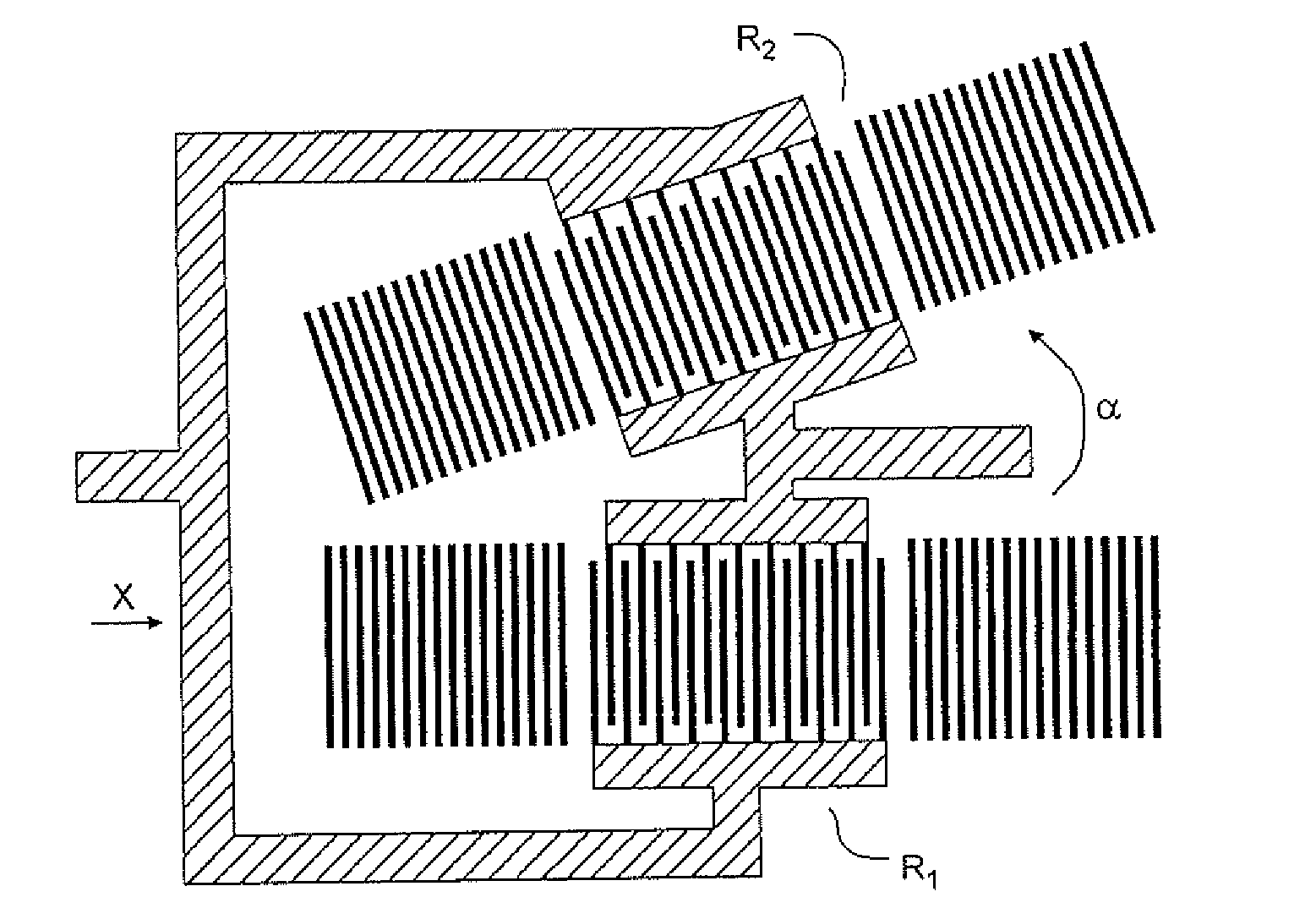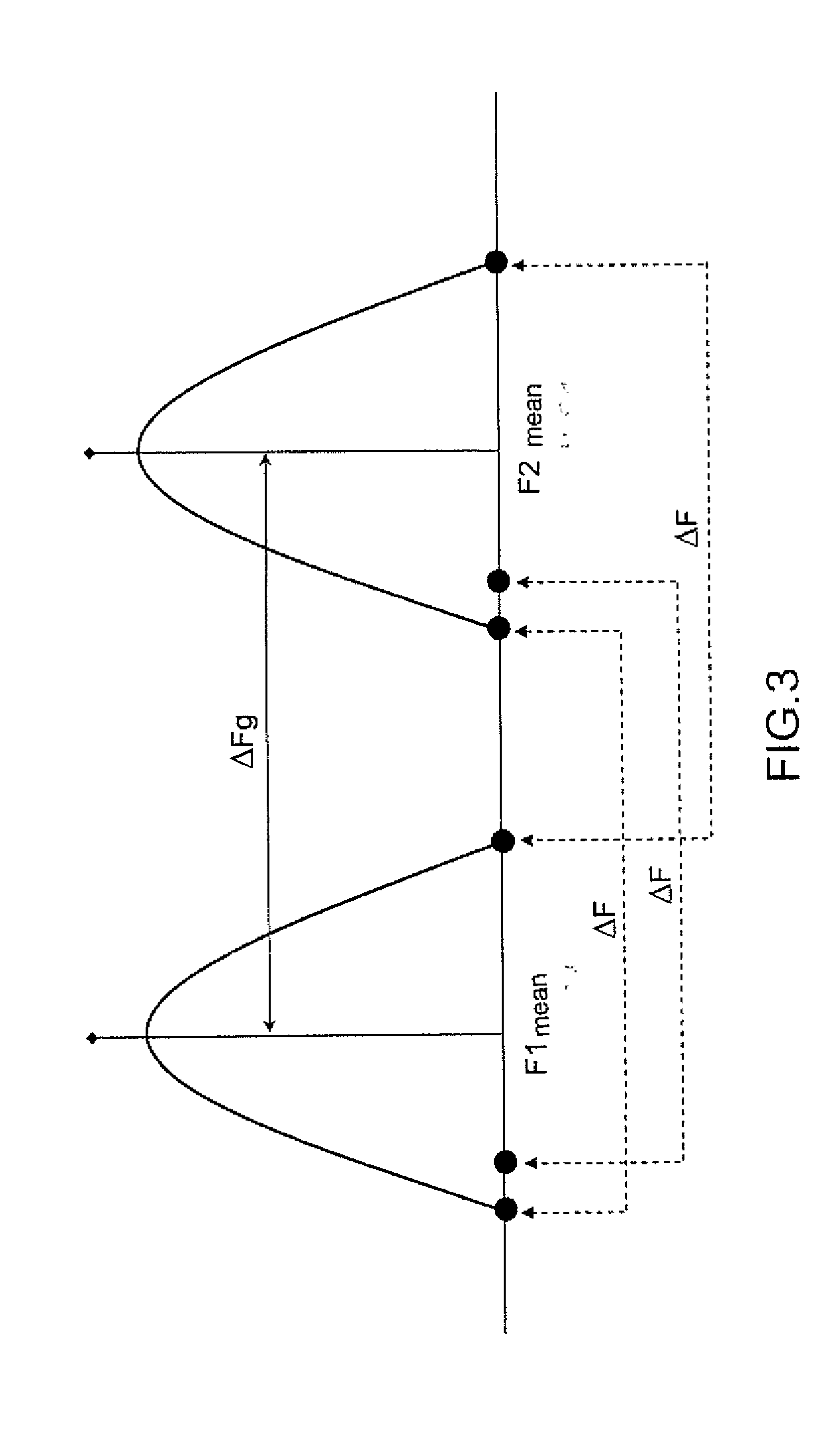Process for the collective fabrication of calibration-free sensors based on acoustic wave devices
a technology of acoustic wave and sensor, applied in the manufacture/assembly of piezoelectric/electrostrictive devices, electromagnets, cores/yokes, etc., can solve the problems of inability to manufacture calibration-free sensors, and inability to meet the requirements of applications
- Summary
- Abstract
- Description
- Claims
- Application Information
AI Technical Summary
Benefits of technology
Problems solved by technology
Method used
Image
Examples
Embodiment Construction
[0071]Generally, the fabrication process according to the invention uses the natural spread in fabrication, so as to pair a first resonator made on a first intermediate substrate with a second resonator made on a second intermediate substrate, doing so in order to preserve a constant frequency difference between the two resonators.
[0072]FIG. 3 shows diagrammatically examples of spread obtained with two intermediate substrates on which a set of resonators have been made.
[0073]More precisely, F1 and F2 being the resonant frequencies of the two resonators, there exist two frequency distributions associated with a certain quantity of fabricated pieces (N1 pieces of first resonators RT1i, and N2 pieces of second resonators RT2j). Each distribution is characterized by a mean value F1mean and F2mean which corresponds to the maximum of the distribution if a normal distribution is considered for greater simplicity.
[0074]If the resonators RT1i, and RT2j are fabricated with the same technologi...
PUM
| Property | Measurement | Unit |
|---|---|---|
| frequency | aaaaa | aaaaa |
| frequency | aaaaa | aaaaa |
| frequency | aaaaa | aaaaa |
Abstract
Description
Claims
Application Information
 Login to View More
Login to View More - R&D
- Intellectual Property
- Life Sciences
- Materials
- Tech Scout
- Unparalleled Data Quality
- Higher Quality Content
- 60% Fewer Hallucinations
Browse by: Latest US Patents, China's latest patents, Technical Efficacy Thesaurus, Application Domain, Technology Topic, Popular Technical Reports.
© 2025 PatSnap. All rights reserved.Legal|Privacy policy|Modern Slavery Act Transparency Statement|Sitemap|About US| Contact US: help@patsnap.com



